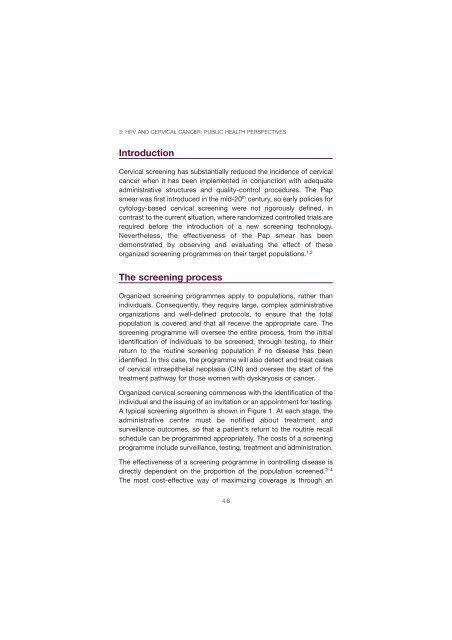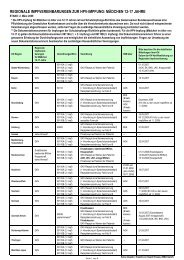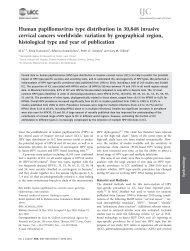Create successful ePaper yourself
Turn your PDF publications into a flip-book with our unique Google optimized e-Paper software.
3: <strong>HPV</strong> AND CERVICAL CANCER: PUBLIC HEALTH PERSPECTIVESIntroductionCervical screening has substantially reduced the incidence of cervicalcancer when it has been implemented in conjunction with adequateadministrative structures and quality-control procedures. The Papsmear was first introduced in the mid-20 th century, so early policies forcytology-based cervical screening were not rigorously defined, incontrast to the current situation, where randomized controlled trials arerequired before the introduction of a new screening technology.Nevertheless, the effectiveness of the Pap smear has beendemonstrated by observing and evaluating the effect of theseorganized screening programmes on their target populations. 1,2The screening processOrganized screening programmes apply to populations, rather thanindividuals. Consequently, they require large, complex administrativeorganizations and well-defined protocols, to ensure that the totalpopulation is covered and that all receive the appropriate care. Thescreening programme will oversee the entire process, from the initialidentification of individuals to be screened, through testing, to theirreturn to the routine screening population if no disease has beenidentified. In this case, the programme will also detect and treat casesof cervical intraepithelial neoplasia (CIN) and oversee the start of thetreatment pathway for those women with dyskaryosis or cancer.Organized cervical screening commences with the identification of theindividual and the issuing of an invitation or an appointment for testing.A typical screening algorithm is shown in Figure 1. At each stage, theadministrative centre must be notified about treatment andsurveillance outcomes, so that a patient’s return to the routine recallschedule can be programmed appropriately. The costs of a screeningprogramme include surveillance, testing, treatment and administration.The effectiveness of a screening programme in controlling disease isdirectly dependent on the proportion of the population screened. 2–4The most cost-effective way of maximizing coverage is through an46








